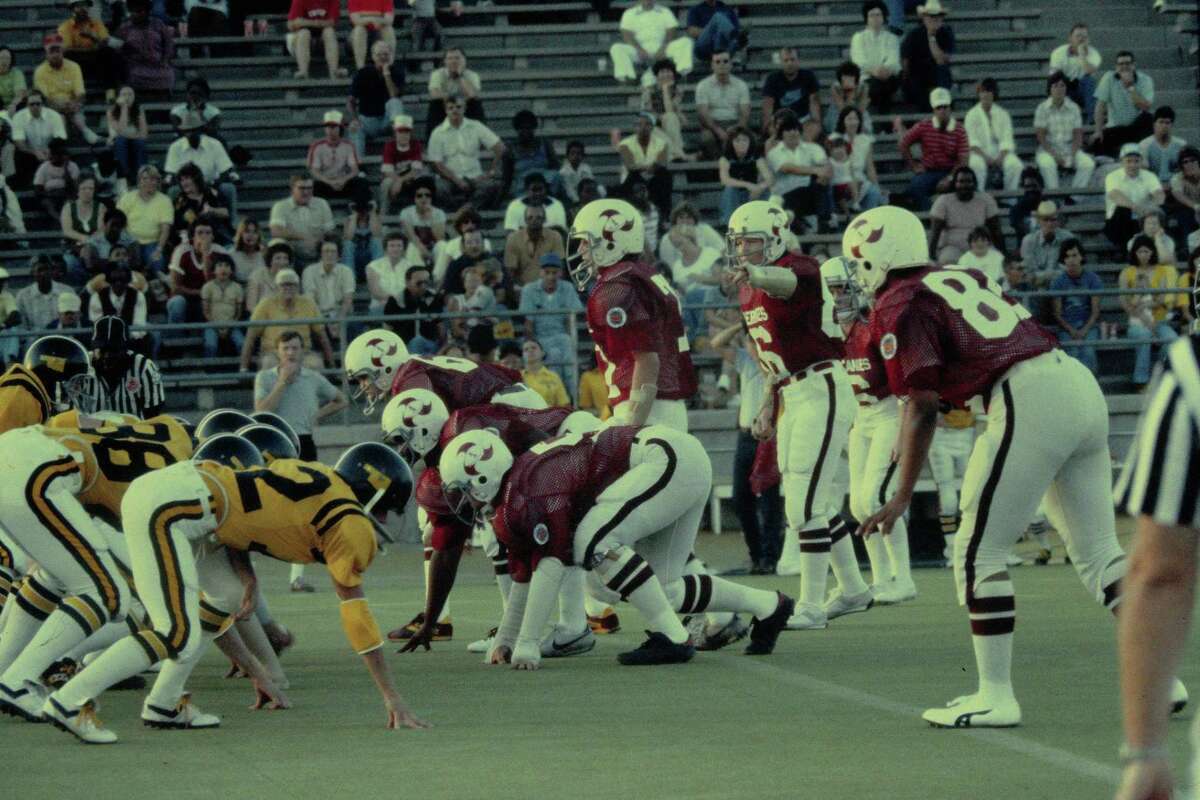I had no idea this existed.
Rose Kelley was jogging through Memorial Park one summer evening when she saw a group of women practicing football. One of the women spotted Kelley, with her sturdy frame and strong legs, and figured her for an athlete.
The Houston Herricanes had found their latest recruit.
The year was 1978, six years after Richard Nixon signed Title IX legislation and five years after tennis star Billie Jean King bested Bobby Riggs in three consecutive sets in the “Battle of the Sexes” at the Houston Astrodome. The sight of women simply tossing around the pigskin was not exactly common. Lining up in full pads in an I-formation for a full-contact game? Unheard of.
But playing football was a lifelong dream for Kelley. Growing up in Brookshire to a large family — six brothers and five sisters — she would often play with the boys, who would impart tips on how to rush the quarterback, never figuring their little sister would put that advice to use.
“Five of my brothers played for the Army or Navy,” said Kelley, now 62. “I always said, ‘I wish that was me.’ I used to tell my mother, ‘Mama, I could bop ‘em.’ ”
When Kelley lined up at defensive tackle wearing No. 72 in what would be the Herricanes’ third season in the nascent National Women’s Football League, she was a force to be reckoned with. A natural pass rusher, Kelley specialized in terrorizing opposing quarterbacks, forcing fumbles and interceptions.
Four decades later, Kelley sat at a table at Harold’s Tap Room & Restaurant in the Houston Heights wearing the same maroon and white No. 72 jersey she proudly wore on the field, surrounded by 20 or so former Herricanes teammates reuniting for the first time since the team folded in 1981.
[…]
Before the NWFL, women’s tackle football in the United States was largely conceived as a novelty act. Sid Friedman, a talent agent, formed the Women’s Professional Football League as a gimmick in the mid-1960s. It was viewed as a Harlem Globetrotters-style barnstorming show.
That league would fold by the early 1970s, but the seed was planted for the NWFL to blossom. What began as a seven-team league in 1974 quickly doubled in size by the time the Herricanes emerged in 1976. There were three divisions across the country, with teams as far east as the Philadelphia Queen Bees and as far west as the San Diego Lobos.
“Most of (the teams) didn’t know each other; they had no idea how the league was structured,” said Britni de la Cretaz, who is writing a book about the NWFL. “They had really very little contact with other teams. They were siloed in that way, and even still there were hundreds of women doing this at any point around the country.”
Marty Bryant remembers reading a magazine article about the Columbus Pacesetters in the fledgling NWFL. An avid softball player, Bryant jumped at any opportunity to play team sports and immediately wrote a letter to the Pacesetters asking how she could form a team in Houston.
“We loved to play sports,” Bryant said. “If you’re an athlete, you’re an athlete. But you need the chance.”
With the help of a news broadcast by famed local sportscaster Anita Martini publicizing the tryout, dozens of women showed up at a Houston park in 1976 to join the Herricanes.
Basia Haszlakiewicz remembers turning on the televsion to see that broadcast and thinking the stars had finally aligned. A former flag football player at the University of Kansas, Haszlakiewicz thought her playing days were long over.
“And there was Anita Martini on the news presenting tryouts for the Houston Herricanes,” Haszlakiewicz said. “I just never watched the news. It was odd. I was like, ‘Okay, well, this was meant to be, obviously.’ ”
The team and the league lasted four seasons, though sadly no records from the games exist. The teams mostly had little money, and of course there was no TV coverage, though to be fair back in 1978 it was hard to find an NBA game on TV. The women faced a ton of sexist abuse for thinking that, you know, girls could play football, too. Normally this is where I’d say that it would be cool if some entrepreneurs took a shot at starting up another league, but given all the health risks we now know about football, I’m not so sure that’s a great idea. But at least between the forthcoming book and documentary, the NWFL can live on.


There’s been several leagues operating since about 2000, though I think they’ve all folded or consolidated into one organization with multiple competition levels. My sister played for a team in Dallas in the late 00’s. It was still very much semi-pro. Cross-country buses, limited travel rosters, player salary (paid game by game) might offset expenses.